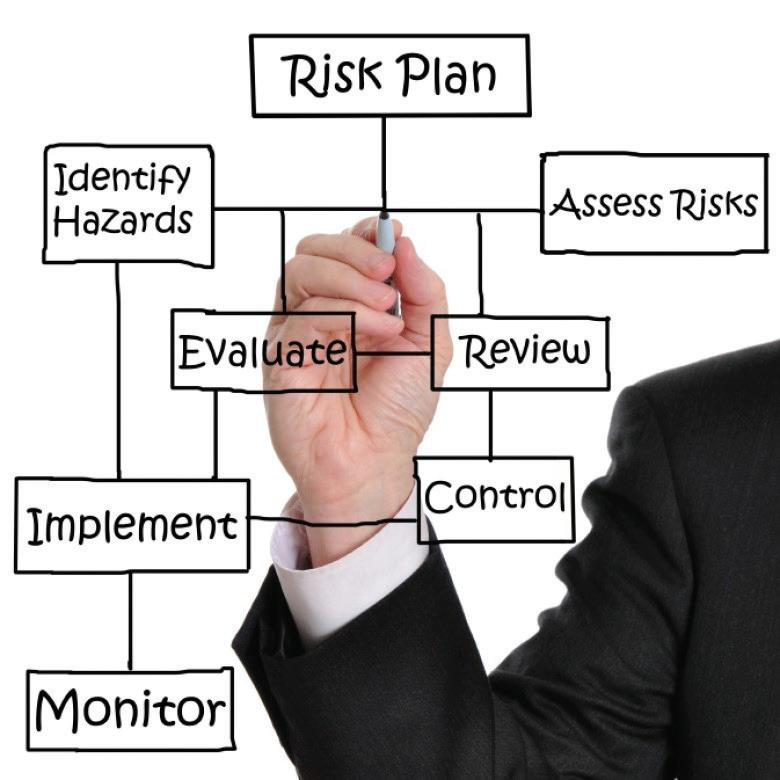
11 minute read
Our Services
Data Center Audit
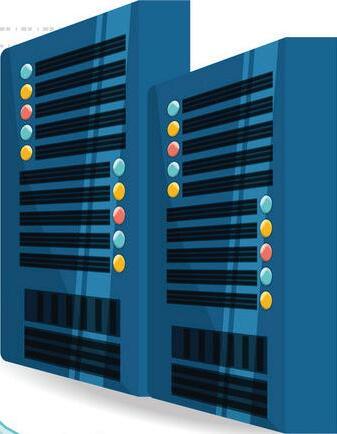
Advertisement
1. Walkthrough assessment:
Obligation:
A data center assessment is conducted for a variety of reasons – optimizing cooling, increasing redundancy, improving energy efficiency and many more. Assessments are critical over the lifecycle of a data center facility because technology is constantly being upgraded, the most effective way of delivering power, cooling and telecommunications to support that technology will likely change over the course of a data center’s usable life, which is typically 15-20 years (at a minimum). Many data centers today experience this challenge and are left trying to use aging power and cooling infrastructure to support cutting-edge technology.
Existing data centers that have been through several technology refreshes will benefit from modernization efforts like aisle containment, cooling augmentations and many more. However, developing a path to improving your data center should begin with an in depth assessment of your existing facility. Many organizations offer standardized data center assessment services that provide a quick ‘health check’ of your data center. At Network Techlab, we believe that each data center is unique and that any data center assessment needs to be customized. More importantly, developing a plan to upgrade an existing, live data center requires careful coordination to ensure the uptime of the infrastructure.
What we offer:
1. Quick walkthrough to determine the health of present DC infra
2. Functional check, visible alarms on the AHUs
3. Functional check, visible alarms on the Electrical System
4. Functional check, visible alarms on the Fire Safety & Security devices
5. Are the civil infra structure intact with no cracks & holes
6. Ambient temperature analysis
7. Rack level cleanliness check
8. Checking of the cable routing & tagging
2. Air Quality Assessment:
Obligation:
The consistent improvement in performance of ITE is accomplished by decreasing the size of the transistors & by the distance traversed by electrical signals to accomplish the tasks assigned to them. The net effect is the miniaturization of all electronic components & the consistent increase in packaging density has led to a detrimental effect on hardware reliability.
The reduction of circuit board size & miniaturization of components that are necessary to improve hardware performance, also make the hardware more prone to attack by corrosive particles & gases in a data center environment.
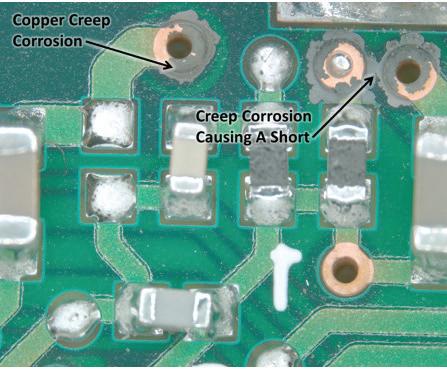
Therefore, it’s important to control flow of airborne contaminants in a data center environment & to recommend a acceptable limit which is critical to the continued reliable operation of IT equipment.
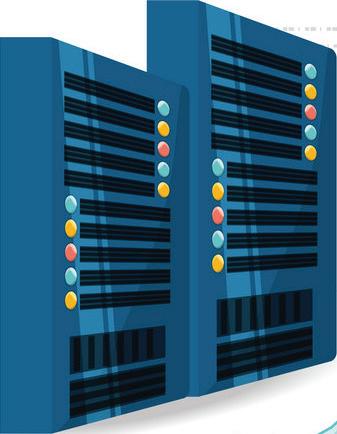
What we offer:
A. Reactivity Monitoring Coupons (RMC)
B. Environmental Condition Monitor (ECM)
C. Air Sample Test
A. Reactivity Monitoring Coupons (RMC) i. Investigative tool to gauge gas-phase filter performance ii. Ideal for site assessment reports related to air reactivity iii. Qualifies the presence or absence of gas types (including sulphur compounds, chlorine compounds) iv. Quantifies reactivity of environment as per ISA-71.04-1985 standards and related coupon standards
RMCs consist of copper & silver coupons mounted on plastic panel. It functions by reacting with the environment (gases, relative humidity & temperature) and records the amount of corrosion on coupon gives information about environment.
B. Environmental Condition Monitor (ECM)
i. Corrosion rate, relative humidity, monitors temperature & differential pressure ii. High sensitivity corrosion rate measurement iii. Corrosion rate of copper & Silver sensors corresponds to ISA classification of Environments iv. Digital & analog outputs v. Optional data-logging
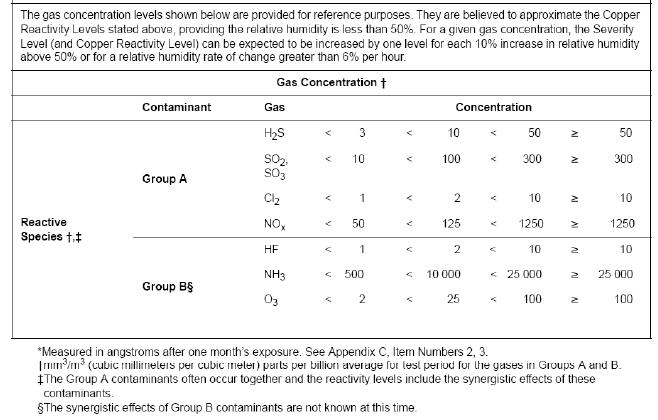
The ECM is a multi-parameter monitoring system that is used for constant surveillance of the surrounding environment & is meant for instant detection of any deterioration in environment that could result in damage to expensive IT equipment & other valuable assets.
The system measures humidity, temperature & the corrosive attack on two replaceable thin-film sensors. The corrosion rate is shown by indicator light that corresponds to the ISA classification of environments (G1 through Gx) for copper & silver.
C. Air Sample Test
Air sampling for 8 hours at each location & analysis in laboratory to measure concentration of gases described by ISA 71.04 – 1985 a) H2S, b) SOx, c) NOx, d) CL2, e) Ozone
Standards for Evaluation
a. ISA 71.04 – 1985 b. ASHRAE Gaseous & Particulate Contamination Guidelines for Data Centers (TC 9.9)

3. Power Quality Audit: Obligation:
Power Quality is a concept of powering & grounding electronic equipment in a manner, which is suitable to its operation & compatible with premise wiring system & other connected equipments. In today’s fast changing scenario and push towards cost saving and Green IT concept, power quality has become a major concern for all types of industries, especially those operating critical machinery & IT equipment that need constant uninterrupted power supply to keep them running. Poor quality of power leads to major problems like break-downs, production interruptions, excess energy consumptions, etc.
In order to prevent such occurrences nowday’s the conventional electrical system are being replaced by modern power electronics systems. As power quality becomes an important factor, focus on quality of equipment used to supply power that can make a big difference in performance is also growing.
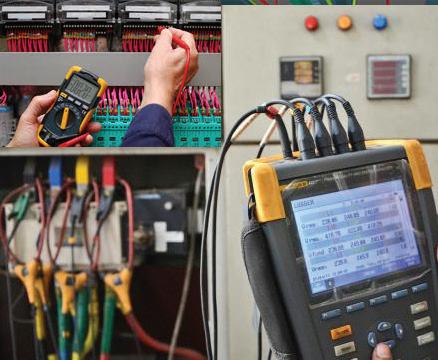
Power Audit Objectives
• Protect client from dangers of power outages or power swings.
• Protect client from any kind of loss or interruption in business.
• Protect client from certain other specific power related problems.

What we offer:
A. Walkthrough Assessment
i. Detailing of electrical distribution.
ii. Current running load capacity.
iii. Maintenance feasibility.
iv. Routing of cables.
v. Separation of power & communication/data cables.
C. Redundancy Assessment
B. Safety Assessment
i. Grounding of critical ITEs.
ii. Panel ground current test.
iii. Grounding of metallic equipment’s.
iv. Interlocking of electrical operations.
i. Studying backup plans in the event of source failure.
ii. Studying transfer logic arrangement.
iii. Transfer load to DG set.
iv. UPS system source redundancy.
v. Equipment’s receiving power from single source.
vi. Power redundancy check from source level for critical, cooling circuits.
D. Threat/Risk Analysis
i. Corrections based on collected data, breaker sizing, & cable sizing.
ii. Identify whether the operations can be fool proof.
iii. Potential area of sabotage will be studied.
E. Power Parameters
Measure various power characteristics & disturbances at main source, emergency source, UPS system input, output & its distribution: i. Phase Voltage Imbalance ii. Voltage Regulation iii. Transients iv. Normal & Common Mode Noise v. Load current nature, Variation & Imbalance vi. Frequency Regulation vii. Power Factor viii. Active, Reactive & Apparent Power ix. Static Charge & Magnetic Field Test

F. Harmonic Assessment i. Measure VTHD & ITHD at main source & emergency source ii. Measure VTHD & ITHD at UPS system input & output
G. Detailed Report i. Includes corrective actions as per international standards & guidelines ii. Includes steps for improve as per international standards & guidelines iii. Detailed analysis of power parameters
H. Power Audit Benefits i. Reduce the magnitude or frequency of power variations ii. Improve the susceptibility of load equipments iii. Add power conditioning to mitigate power quality problems iv. Savings in energy bills due to reduced losses v. Improve safety vi. Improve system efficiency vii. Improve uptime

4. Thermography:
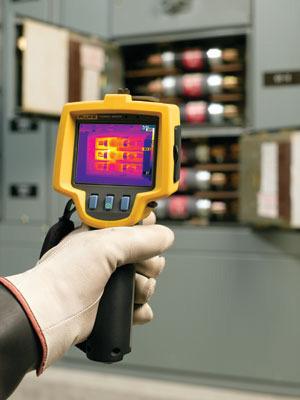
Need:
Temperature is the physical property that quantitatively expresses the common notations of hot & cold. Every object emits energy in electromagnetic spectrum. The wavelength of the energy differs depend on materials. As shown below; if the wavelength is in the range between 400 nm to 720 nm i.e. visible range, then the body would be visible. If the energy emitted is having wavelength beyond 720 nm, then it would be invisible. This infrared energy can be captured using Thermal Imager.
Thermography is the non-contact analysis & mapping of thermal patterns of an object. It’s known that all objects emit infrared radiation based on their temperature. Thermal imagers detect this infrared radiation & according to the black body radiation law, thermography makes it possible to see one’s environment with OR without visible illumination. As such Thermography is used to monitor & analyze the performance of electrical equipments & if done properly can help prevent fire hazards/failures.
Difference between Normal & Thermal Images
Thermography Benefits
i. Prevent fire hazards ii. Reduce equipment down time iii. Maintain economics reduction iv. Business interruption minimization
5. Harmonic Study:
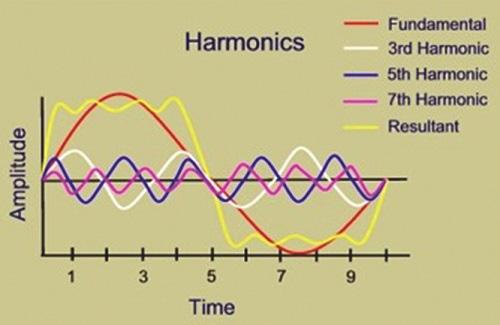
Obligation:
Harmonics study revolves around the use of non-linear loads that are connected to electric power systems including static power converters, arc discharge devices, saturated magnetic devices and to a lesser degree, rotating machines.
Static power converters of electric power are the largest non-linear loads and are used in industry for a variety of purposes such as electro- chemical power supplies, adjustable speed drives, and uninterruptible power supplies. These devices are useful because they can convert AC to DC, DC to DC, DC to AC, and AC to AC.
Non-linear loads change the sinusoidal (a succession of waves or curves) nature of the AC power current (and consequently the AC voltage drop) thereby resulting in the flow of harmonic currents in the AC power system that can cause interference with communication circuits and other types of equipment.
When reactive power compensation in the form of power factor improvement capacitors is used with these non-linear loads, resonant conditions may occur that can result in spurt in harmonic voltage and current distortion when the resonant condition occurs at a harmonic associated with nonlinear loads.
Thermography Benefits
• Protect client from power dangers.
• Protect client from business loss & interruption.
• Protect client from certain power related problems.

What we offer:
A. Walkthrough Assessment
B. Harmonic Assessment
C. Detailed Report
A. Walkthrough Assessment
i. Detailing of electrical distribution ii. Current running load capacity
B. Harmonic Assessment
i. Measuring voltage & current harmonics (VTHD & ITHD) at main source & emergency source.
ii. Measuring voltage & current harmonics (VTHD & ITHD) at VFDs input, UPS system input – output & distribution.
iii. Check for voltage & current waveforms.
iv. Measure instantaneous values of power parameters.
C. Detailed Report
i. Recommendation for corrective actions based on international standard & guidelines.
ii. Recommendations for improvement based on international standards & guidelines.
iii. Detailed analysis of harmonics & power parameters.
Harmonic Study Benefits
• Reduce the magnitude or frequency of power variations
• Improve the susceptibility of load equipment’s
• Add power conditioning so as to mitigate power quality problems
• Improved safety measures
• Improved system efficiency

6. Fire Safety & Security Devices:
Obligation:
Safety & Security system plays an important role in any office premises. The timely functioning of these devices are very much essential.
What we offer:
A. Functional check of Fire System – Novec1230, FM200, CO2, etc
B. Functional check of Rodent Repellent System
C. Functional check of CCTV System
D. Functional check of Access Control System
E. Functional check of Water Leak Detection System
F. AMC of Existing System
Tailored Solutions for Data Center Cooling


As the temperature rises, so does your risk
• Every operation of your company depends upon the instant around-the-clock availability of computers, servers and other electronic systems. If they aren’t working, neither is your company.
• Unfortunately, every piece of this equipment your company possesses produces heat. And if you don’t get rid of the heat, you are going to have problems.
• The first step in taking control of this situation is to understand the threats to your system reliability –and exactly what you can do about them.
• From high-capacity units to compact above-ceiling systems, there is a Liebert system designed to cool and protect your Critical Systems. We make the industry’s widest range of precision environmental control systems.
Challenges in the Pursuit of Uptime:


1. Heat is still the enemy
2. It’s aso the humidity - and the dust
3. Every facility is unique
4. Energy is expensive
5. The protection has to be there, No matter what the calender says.
Our Solutions:
1. Precision Systems provide proper cooling under all conditions.
2. Precision Systems keep moisture and Air Cleanliness right where they need to be.
3. Precision Systems offer a real choice of cooling and haet rejection methods.
4. Precision Systems meet the cooling needs of Critical Spaces.
5. Precision Systems are engineered to get the most from every Energy Dollar.
6. Precision Systems are designed to operate year-round.
Range of Precision Cooling Solutions
Liebert® SRC - Small Room Cooling
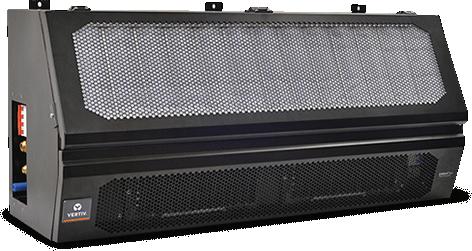
Thermal Management Solution for Small Equipment Rooms
Liebert® SRC is designed for High air quantity to match equipment Sensible Load application. It is coupled with high energy efficient components and advanced control system which helps in maximum energy efficiency and guarantees proper environmental conditions inside Critical Technological rooms.
Features
• Temperature Control
• EC Fan
• Green Refrigerant
• Free Cooling for Optimizing

• High SHR
• Metallic Body
• Energy efficiency
• 24 x 7 Operation
• Load Sharing
• Remote Monitoring
• High Ambient
Applications
• Rack Room
• Network Room
• Switch Room
• UPS Room
• Battery Room
• Electrical Room
• Control Room
• Hub Room
• ATM Room
Best Suited For: Banking, Financial and Insurance, Manufacturing
Liebert® DM™
High Performance, Sensible Cooling for Small Computer Rooms and Network Closets
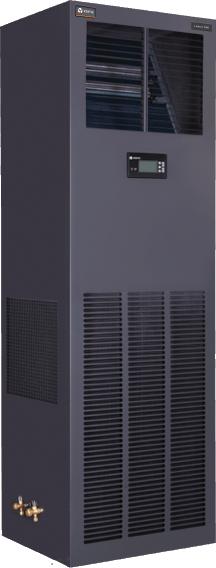
Liebert DM delivers enterprise level thermal management to small computer rooms and network closets. It is designed for year-round temperature and humidity control for IT applications across the critical infrastructure.
Features
• Energy saving
• Space Saving
• User-Friendly and Maintenance-Free
• Highly adaptive
Applications
• Small and Medium Sized Computer Rooms
• UPS and Battery Rooms
• Outdoor Electronic and Communication Equipment Rooms
• Transformer Stations, Substations
• Laboratories, Test Rooms and Storage Rooms
Best Suited For: Banking, Financial and Insurance, Data Center/Colocation/Hosting, Education, Government, Healthcare, Manufacturing, Transportation

Liebert® PDX
The Cooling Solution for Small and Medium data Centers

The Liebert PDX direct expansion cooling unit is equipped with the most advanced industry technology which allows the unit to reach significant levels of efficiency, guaranteeing precise cooling of data centers and server rooms.
Features
• Extended Units
• Full load Efficiency + 10%
• EC Fan 2.0
• pPUE 1.12
• Partial Load Efficiency + 30%
• Up to 100m Length
• Economizer, Freecooler, SmartAisleTM
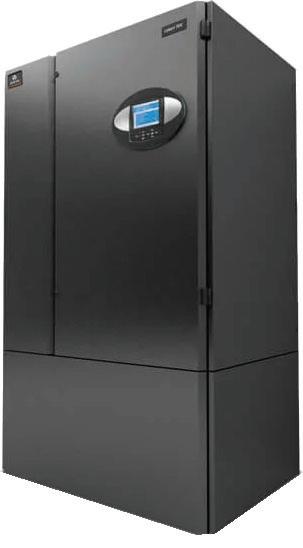
• Digital & EEV
• Up to 38°C Room Temperature with SmartAisleTM
Applications
• Variable Frequency Drives Rooms
• Electrical Panel Rooms
• Control Rooms
• UPS, Battery & RACK Room
• Instrument Calibration Room
Best Suited For: Data Center/Colocation/Hosting, Banking, Financial and Insurance, Broadcast and Entertainment, Government, Telecom, Transportation
Liebert® PCW
Cool the Cloud
Liebert PCW is the ideal chilled water cooling unit, providing an efficient solution for data center and server room air conditioning. This water cooling system is available in a wide variety of configurations and capacities, ranging from 200 kW to 6 MW.
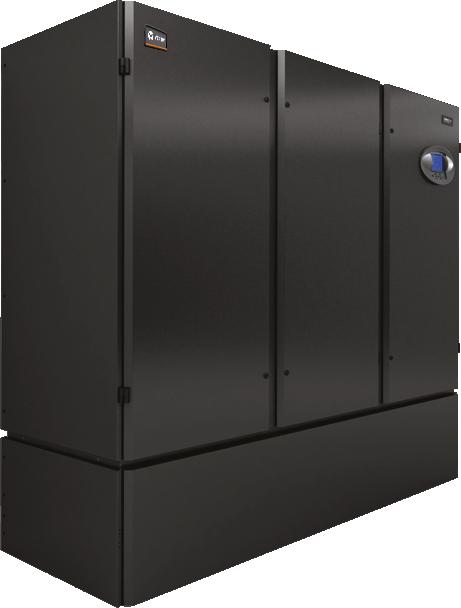
Features
• High Efficiency
• The new generation of Liebert EC Fan 2.0 is the core of the Liebert PCW
• Unit Aeraulic Design – A New Way to Look at Aerodynamics
• Cooling and Power Energy Meters
• Available with iCOM ® Control when Smart Means
• Free cooling Chillers & Supersaver Optimizing System
Applications
• Server Rooms
• Electronic Switch Rooms
• Industrial Process Control Rooms
• Motor Control Rooms
• Broadcast Facilities
• Building Services Control Rooms
• Surveillance and Monitoring Centers
• Medical Equipment Installations
• Telecommunication Facilities
Best Suited For: Banking, Financial and Insurance, Broadcast and Entertainment, Construction and Engineering, Data Center/Colocation/Hosting, Government, Manufacturing, Telecom, Transportation

Liebert® CRV
The Efficient Cooling for IT
A self-contained data center cooling unit that is ideally suited and designed for cooling server rack cabinets in small and medium data centers. Liebert CRV features Vertiv ICOM Control and compressor with modulating capacity, for high reliability and optimized data center heat management.
Features
• Features variable speed EC plug fans and variable capacity compressor
• Enlarged range available from 10 to 60 kW
• The graphic display allows easy navigation and clear data display
• Includes a 300 mm space saving frame
• Thermal management and humidity control
• Installs within the row of racks
• Low energy consumption
Applications
• Small to Medium-Sized Data Centers

Cold/Hot Aisle Configurations
• Heat Density Upto 10 kW/Rack
Without Containment
• Raised and Non-Raised Floors
• Rooms With a Low Ceiling where Air cannot be Ducted
• Spot Cooling in Large Data Centers Best Suited For:

